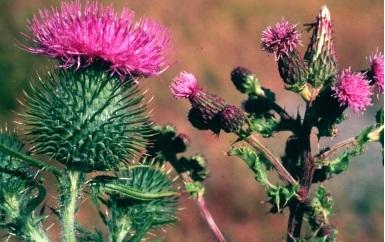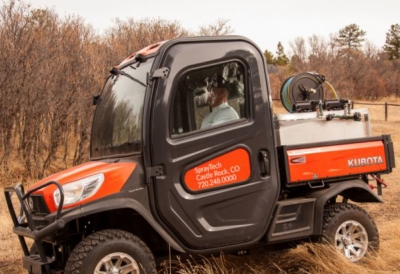Pasture and Rangeland Noxious Weed Control
SprayTech provides pasture and rangeland noxious weed control to the South Metro Denver and the Front Range communities. We specialize in prevention, eradication, and control of noxious weeds found on rangeland and native areas in Castle Rock, Sedalia, Franktown, Parker, Larkspur, Monument and other areas.
The prevention and control of noxious weeds in rangeland should be taken very seriously by the land owners in Douglas County, especially the invasive plant species that are still rare and have not invaded a lot of acres of land. Approximately 97,000 acres within Douglas County are infested with undesirable weeds and this is a growing figure which constitutes a present threat to the continued economic and environmental value of the lands within Douglas County. Right now four rare List A invasive plant species can be found in Douglas County. They are Orange hawkweed, Myrtle spurge, Purple loosestrife, and Cypress Spurge. These undesirable weeds are required to be eradicated. There are also 23 rare list B species that can found in our area. Some of List B noxious weeds of Douglas County are Bull & Plumeless thistles, Russian & spotted knapweeds, Common & Cutleaf teasel, Dames Rocket, Common Tansy, Bouncingbet, Oxeye Daisy, Houndstongue, Hoary Cress, Sulfur Cinquefoil, Salt Cedar, Absinth wormwood. There is at least one rare species from the watch list which is Pampas grass. It is very important to eradicate these rare species. Early prevention and eradication of these rare species will stop their spreading and avoid increasing infestation.
We can also treat commonly found noxious weeds like Canada thistle, leafy spurge, diffuse knapweed, yellow toadflax, musk thistle, goatheads, yellow mustard, alfalfa, knapweed, baby’s breath, bindweed, elongated mustard, and kochia. We will work on rangeland noxious weed control to the level where you can use and enjoy your land. If left untreated, they can affect agriculture, wildlife forage, and water supply. They can rapidly invade rangelands and cause serious decline in desired vegetation. Some of the weeds can be toxic and poisonous to livestock.
Rangeland Noxious Weed Control Program
Generally, for successful weed management program against invasive plant species two or more methods of control are recommended. There are four rangeland noxious weed control methods: cultural, mechanical, biological and chemical. A weed management plan should work towards encouraging desirable vegetation that will compete with invasive plant species like Canada thistle
Treatment and mitigation of rangeland noxious weeds is not a one-year process. In most cases it will require a cycle of two to four or even more years to get weeds under control. Some of the noxious weeds are very persistent and hard to control. They may recover after control. So we will have to repeat procedures as necessary.
If you think you need rangeland noxious weed control, take responsible action immediately by contacting SprayTech. Get a quote for free today. Early detection and rapid control is the key to successful weed management plan.


